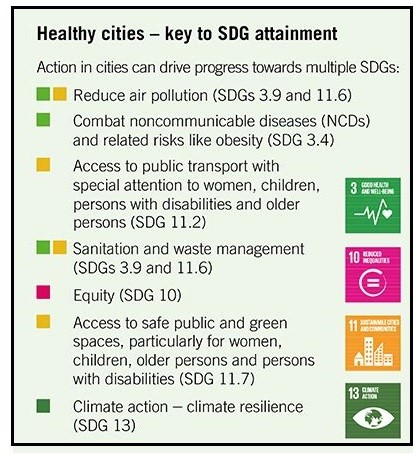7667766266
enquiry@shankarias.in
Unhealthy diets, reduced physical activity and air pollution are posing a greater risk to morbidity and mortality in urban areas.
|
Status of Urban India |
|
|
Health benefits |
Economic benefits |
|
Increased physical activity reduces the risk of chronic diseases |
Reduced fuel consumption and greenhouse gas emissions |
|
Reduced exposure to air pollution |
Reduced congestion and travel time |
|
Reduced traffic injuries and fatalities |
Increased access to opportunities and services |

References